Many people have contributed to the lives of people in Higashihiroshima City. There are stone monuments and stories of their work in some areas.
Here, we will study Mr. Kaichi Okita, who made Nakanotao Tunnel, located in Saijo Cho Goso near Gota Elementary School, and helped improve people’s lives.
Zuido is a tunnel (Nakanotao Zuido is a tunnel where water flows).
 Nakanotao Tunnel today (Saijo Cho Goso) |
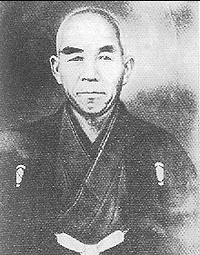 Mr. Kaichi Okita (1873–1939) |
| Why was Nakanotao Tunnel needed? How was it made? |
 |
| Let’s find out what Kashobara District, a village near Nakanotao Tunnel, was like before the tunnel was made. | 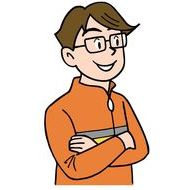 |
Village suffering from lack of water
Rice has been cultivated in Kashobara District since old times. People get a good harvest every year. However, they used to suffer from dry weather once every four years. As there was no river nearby, reservoirs dried up, killing rice plants (drought).
In Kashobara District, there was a big, 10-hectare reservoir (100,000 m2, about the size of 10 school grounds), and people used to draw water from it to water their paddy fields. Kashobara District had plenty of water as long as Fukado Pond was full. However, because the mountains around Fukado Pond were small, very little water flowed into the pond. People depended on rainwater, and it took them more than two years to fill the pond once they used up the water. The lack of water was a big concern for farmers in Kashobara.
| Write down the causes of drought in Kashobara District. | 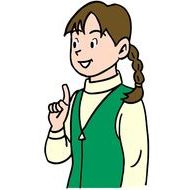 |
 |
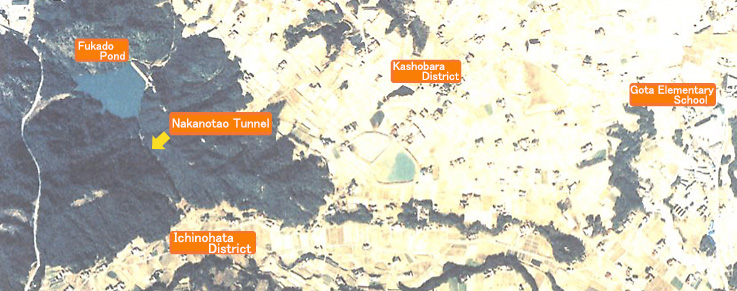 |
 Trivia 【Reservoirs in Higashihiroshima
City】 Trivia 【Reservoirs in Higashihiroshima
City】 |
| Rice has been cultivated in Higashihiroshima City since old times.
Many paddy fields stretch across the flat basin land even today. Water is essential for rice
cultivation.Because there are few rivers in Higashihiroshima City, many reservoirs were made to draw water
to paddy fields that could not draw water from rivers. Currently, there are about 4,500 reservoirs in Higashihiroshima City. |
Digging a tunnel
People had already thought about drawing water from the Kotayamagawa River to Fukado Pond and keeping it full at all times to prevent drought (around 1909). However, a rocky mountain stood between the Kotayamagawa River and Fukado Pond, and a 327 m tunnel had to be dug through it to draw water. People in Kashobara thought it impossible and had given up.
| We must dig a tunnel through the rocky mountain to prevent drought. |  |
| Why did Mr. Okita decide to dig a tunnel? |  |
 The determination of Mr. Kaichi Okita The determination of Mr. Kaichi Okita
|
| Mr. Kaichi Okita (1873–1939) was born about 140 years ago when our
elementary schools were first built.In his youth, he went to the United States of America to study civil
engineering. A severe drought occurred in 1926.In Kashobara District, people could not even plant rice due to a lack of water. Looking at Fukado Pond without water, Mr. Okita became determined. “We must dig a tunnel to draw water from the Kotayamagawa River to Fukado Pond. I will dedicate the rest of my life to this work,” he said. He was 53 years old then. |
 |
Although he was determined to dig a tunnel through the rocky mountain, Mr. Okita was opposed by people who thought it impossible and burdensome.
However, the village mayor and his friends, who knew about his risky decision, explained repeatedly the need to dig a tunnel. Finally, Mr. Okita was allowed to do the work under strict conditions.
On March 25, 1927, Mr. Okita started the work alone. He built a hut nearby and dug the tunnel every day from early morning when stars could still be seen to late evening when the moon cast shadows.
He dug from the northern side in the summer to avoid the heat, and from the warm southern side in the winter. He patiently crushed hard rocks using a hammer and chisel.
In the spring of 1928, a year after he started the work, the tunnel reached 2m. He was brought to tears when he saw the tunnel he had dug.
Difficult promises made to the villagers
They would not pay any money needed for the work.
If he stopped the work halfway, he must return the tunnel back to its original state and pay money for the damaged parts.
| Let’s discuss how you feel about Mr. Okita’s tunnel work. |
 |
 Amount Mr. Okita dug each day |
 Tools he used (left: rope basket, right: hammer and chisel) |
| Why did people in Kashobara decide to help him? |  |
He had dug over 30 m by 1929. Seeing Mr. Okita’s serious attitude, and considering their need for water, people decided to help him. They called stonemasons and used dynamite. The work progressed rapidly. Mr. Okita turned to help them, and they worked very hard together.
Water flows to Fukado Pond
On August 15, 1930, Nakanotao Tunnel was finally completed. People who had opposed Mr. Okita at the beginning were ashamed and praised him as the “Zenkai of the Showa Period.”
Mr. Okita then started to work on widening the road leading to Gota Elementary School. However, he passed away in May 1939 at the age of 66.
Thanks to Nakanotao Tunnel, Fukado Pond was always filled with water. People in Kashobara were very grateful to Mr. Okita. They built a stone monument for him and made a Bon Dance song about him to commemorate his achievement.
 Mr. Okita (indicated by the arrow) (Picture when the tunnel was opened) |
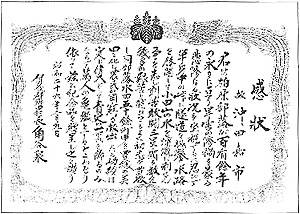 Letter of thanks from the village to Mr. Okita |
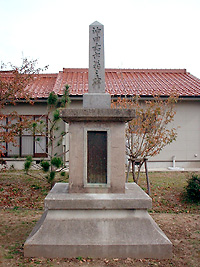 Kaichi Okita stone monument |
| Gota Bon dance song |
|
Ha... Fukado is in Gota Oike, Fukado is deep with many Mizuko Ha... Long dry weather brought drought and suffering to the Mizuko Ha... They thought hard but did not have any good ideas Ha... And a man came, named Kaichi Okita Ha... A healthy man of sixty years, he dug a tunnel to draw water from the mountain Ha... To fill the pond, he kept himself in the mountain without wife or child Ha... Despite rain and wind, he dedicated himself and worked alone for two years Ha... Rocks came one after another, but he worked hard every day Ha... Seeing him, the people of Mizuko discussed and paid a great sum Ha... They are not afraid of drought anymore, what an amazing event it was |
| Let’s check the chronology to see how Nakaotao Tunnel was made. |  |
History of the construction of Nakanotao Tunnel
| Year | What the village was like / what people did and wanted | What Mr. Kaichi Okita did |
| 1805 | Kashobara Village developed in the forest. | |
| Fukado Pond made. | ||
| 1909 | A plan to dig a tunnel comes up(but no work starts). | |
| 1926 | Drought in Kashobara Village.Dry weather continues and people cannot plant rice. | He decides to dig a tunnel. |
| Many people oppose him.People in Kashobara Village oppose him. | “I really want to draw water... I will dedicate the rest of my life to it.” | |
| 1927 | The tunnel work is permitted.Groundbreaking ceremony | He starts the work alone. |
| Four people attend. | ||
| A little sake and some snacks were served. | ||
| He starts digging from the southern side of Nakanotao Tunnel. (Southern side in winter, northern side in summer) | ||
| Work does not advance smoothly. | ||
| 1928 | Youth association members come to help but give up after two days. | He digs 2 m on the northern side. |
| 1929 | Most rice plants dry up due to the severest drought in 40 years. | He digs 30 m.He digs even more courageously. |
| People in Kashobara District grow willing to help him. | ||
| Stonemasons come but do not keep working. | ||
| 1930 | Four stonemasons come from Banjo. | He starts to work on the water channel. |
| They start to work with dynamite. | He helps the stonemasons with cooking. | |
| Length 327 m Height 1.2 m | ||
| Completion of the tunnel | width:auto;max-width: 0.9 m Cost 2,700 yen (at the time) | |
| 1939 | Mr. Kaichi Okita passes away(age 66) | |
| 1950 | “Memorial of venerable Kaichi Okita” is built | |
| 1975 | “Memorial of Nakanotao Tunnel” is built |


